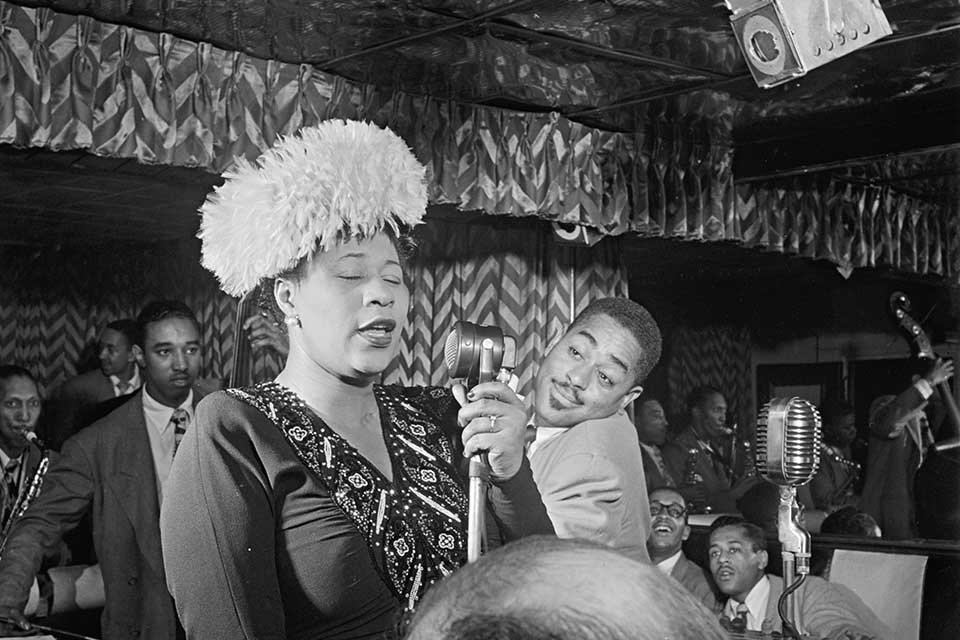
Path-breaking trumpeter, composer and bandleader Dizzy Gillespie gazes with adoration as Ella Fitzgerald takes flight in song at the midtown Manhattan nightclub Downbeat in September 1947. Standing behind them is bassist Ray Brown, Fitzgerald’s husband at the time. Gillespie was in the vanguard of the new jazz—the rapid cascades and harmonic innovation dubbed bebop—and Ella possessed a parallel vocal agility. She had debuted little more than a decade earlier at Amateur Night at the Apollo Theater in Harlem, deciding at the last minute to sing instead of dance as she had intended. She became revered for the purity of her tone as well as the precision of her scatting, possessing a bright, bubbly quality that distinguished her from peers Billie Holiday and Sarah Vaughan.
“Why should music stand still? Nothing else stands still.”
This photograph, taken by jazz photographer William Gottlieb, would appear on the cover of a recording of a monumental event: “Dizzy Gillespie, Ella Fitzgerald, Charlie Parker: It Happened One Night,” the September 29, 1947, concert that marked the first time Gillespie played Carnegie Hall as a headliner. The show was produced by jazz critic Leonard Feather; in the program notes, Duke Ellington wrote, “Why should music stand still? Nothing else stands still.” Some consider the night’s collaboration between Gillespie and bebop sax icon Charlie Parker as among the finest work of these two horn legends. All were giants in jazz, but Ella Fitzgerald later credited Marilyn Monroe for helping the singer establish herself. The actress once convinced the owner of the Mocambo in Hollywood to book Ella Fitzgerald by promising to take a front row seat at each performance. The place was packed every night of the run.





